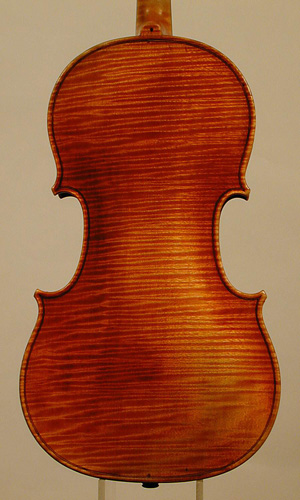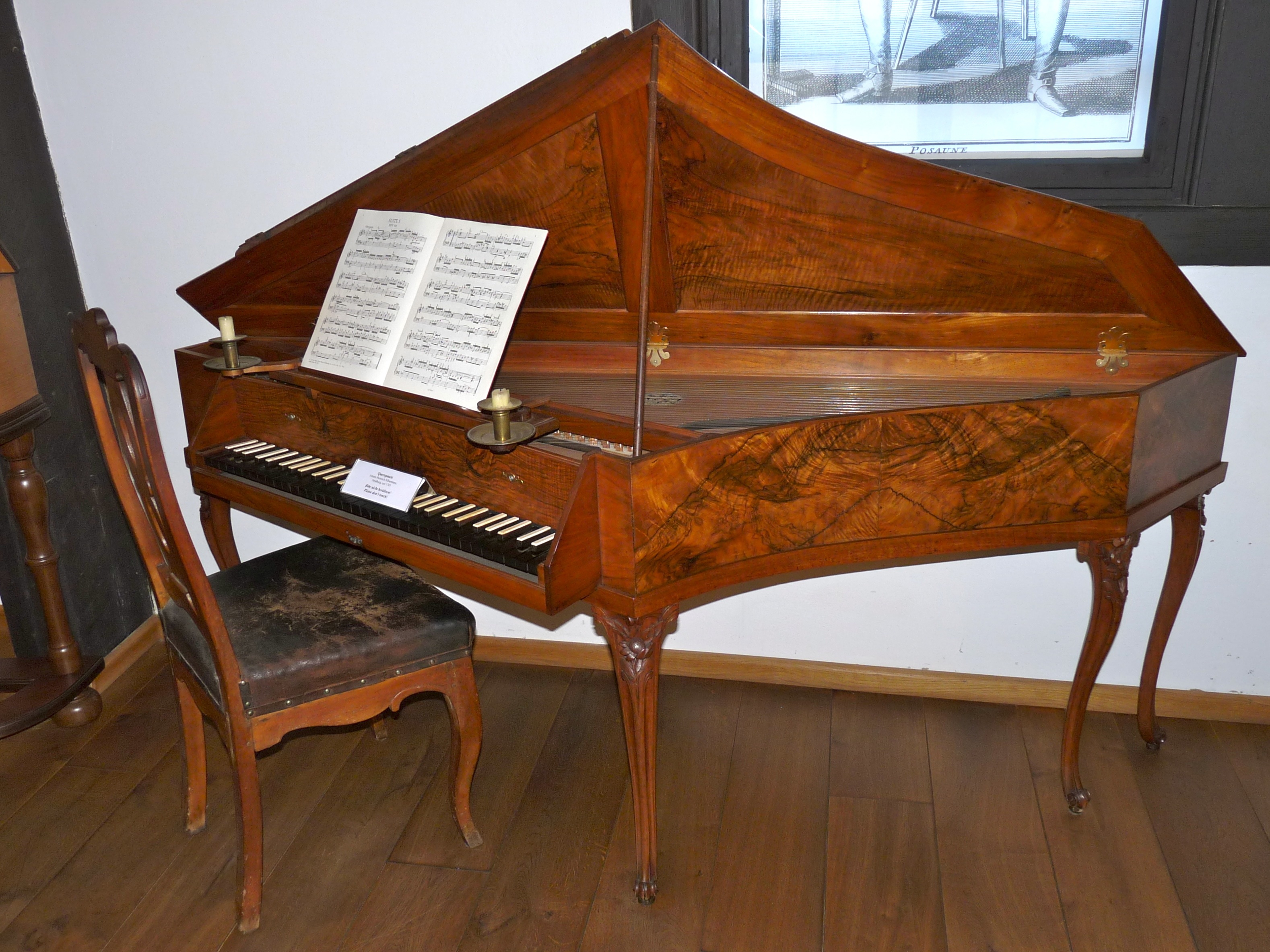|
Bookmatching
Bookmatching is the practice of matching two (or more) wood or stone surfaces, so that two adjoining surfaces mirror each other, giving the impression of an opened book. As applied to wood, bookmatching is usually done with veneer (produced in one of several ways), but can also be done with solid wood. The technique is used to beautify a variety of objects such as furniture, violins, guitars or the interior of high-luxury cars. The two adjoining surfaces are produced from the same piece of wood, so that they have (almost) exactly the same appearance, but mirrored. The final effect varies with the figure of the wood chosen and can range from extremely subtle (so that the two surfaces almost appear to be a single piece of wood), to dramatic effects with wavy grain showcased, as in high-end guitars. Bookmatching is also possible with marble or other patterned stone. See also * Luthier *For keyboard instruments adorned with bookmatched veneer, see Spinet and Conrad Graf Conrad Gr ... [...More Info...] [...Related Items...] OR: [Wikipedia] [Google] [Baidu] |
Wood Veneer
In woodworking, veneer refers to thin slices of wood and sometimes bark, usually thinner than 3 mm (1/8 inch), that typically are glued onto core panels (typically, wood, particle board or medium-density fiberboard) to produce flat panels such as doors, tops and panels for cabinets, parquet floors and parts of furniture. They are also used in marquetry. Plywood consists of three or more layers of veneer. Normally, each is glued with its grain at right angles to adjacent layers for strength. Veneer beading is a thin layer of decorative edging placed around objects, such as jewelry boxes. Veneer is also used to replace decorative papers in Wood Veneer HPL. Background Veneer is obtained either by "peeling" the trunk of a tree or by slicing large rectangular blocks of wood known as flitches. The appearance of the grain and figure in wood comes from slicing through the growth rings of a tree and depends upon the angle at which the wood is sliced. There are three main types ... [...More Info...] [...Related Items...] OR: [Wikipedia] [Google] [Baidu] |
Vuillaume Violin Backside
Jean-Baptiste Vuillaume (7 October 1798 – 19 March 1875) was a French luthier, businessman, inventor and winner of many awards. His workshop made over 3,000 instruments. Early life Vuillaume was born in Mirecourt, where his father and grandfather were luthiers. Career Vuillaume moved to Paris in 1818 to work for François Chanot. In 1821, he joined the workshop of Simon Lété, François-Louis Pique's son-in-law, at Rue Pavée St. Sauveur. He became his partner and in 1825 settled in the Rue Croix-des-Petits-Champs under the name of "Lété et Vuillaume". His first labels are dated 1823. In 1827, at the height of the Neo-Gothic period, he started to make imitations of old instruments, some copies were undetectable. In 1827, he won a silver medal at the Paris Universal Exhibition, and in 1828, he started his own business at 46 Rue Croix des Petits-Champs. His workshop became the most important in Paris and within twenty years, it led Europe. A major factor in his success ... [...More Info...] [...Related Items...] OR: [Wikipedia] [Google] [Baidu] |
Violin
The violin, sometimes known as a ''fiddle'', is a wooden chordophone (string instrument) in the violin family. Most violins have a hollow wooden body. It is the smallest and thus highest-pitched instrument (soprano) in the family in regular use. The violin typically has four strings (music), strings (some can have five-string violin, five), usually tuned in perfect fifths with notes G3, D4, A4, E5, and is most commonly played by drawing a bow (music), bow across its strings. It can also be played by plucking the strings with the fingers (pizzicato) and, in specialized cases, by striking the strings with the wooden side of the bow (col legno). Violins are important instruments in a wide variety of musical genres. They are most prominent in the Western classical music, Western classical tradition, both in ensembles (from chamber music to orchestras) and as solo instruments. Violins are also important in many varieties of folk music, including country music, bluegrass music, and ... [...More Info...] [...Related Items...] OR: [Wikipedia] [Google] [Baidu] |
Guitar
The guitar is a fretted musical instrument that typically has six strings. It is usually held flat against the player's body and played by strumming or plucking the strings with the dominant hand, while simultaneously pressing selected strings against frets with the fingers of the opposite hand. A plectrum or individual finger picks may also be used to strike the strings. The sound of the guitar is projected either acoustically, by means of a resonant chamber on the instrument, or amplified by an electronic pickup and an amplifier. The guitar is classified as a chordophone – meaning the sound is produced by a vibrating string stretched between two fixed points. Historically, a guitar was constructed from wood with its strings made of catgut. Steel guitar strings were introduced near the end of the nineteenth century in the United States; nylon strings came in the 1940s. The guitar's ancestors include the gittern, the vihuela, the four- course Renaissance guitar, and the ... [...More Info...] [...Related Items...] OR: [Wikipedia] [Google] [Baidu] |
Marble
Marble is a metamorphic rock composed of recrystallized carbonate minerals, most commonly calcite or Dolomite (mineral), dolomite. Marble is typically not Foliation (geology), foliated (layered), although there are exceptions. In geology, the term ''marble'' refers to metamorphosed limestone, but its use in stonemasonry more broadly encompasses unmetamorphosed limestone. Marble is commonly used for Marble sculpture, sculpture and as a building material. Etymology The word "marble" derives from the Ancient Greek (), from (), "crystalline rock, shining stone", perhaps from the verb (), "to flash, sparkle, gleam"; Robert S. P. Beekes, R. S. P. Beekes has suggested that a "Pre-Greek origin is probable". This Stem (linguistics), stem is also the ancestor of the English language, English word "marmoreal," meaning "marble-like." While the English term "marble" resembles the French language, French , most other European languages (with words like "marmoreal") more closely resemb ... [...More Info...] [...Related Items...] OR: [Wikipedia] [Google] [Baidu] |
Luthier
A luthier ( ; AmE also ) is a craftsperson who builds or repairs string instruments that have a neck and a sound box. The word "luthier" is originally French and comes from the French word for lute. The term was originally used for makers of lutes, but it came to be used already in French for makers of most bowed and plucked stringed instruments such as members of the violin family (including violas, cellos, and double basses) and guitars. Luthiers, however, do not make harps or pianos; these require different skills and construction methods because their strings are secured to a frame. The craft of luthiers, lutherie (rarely called "luthiery", but this often refers to stringed instruments other than those in the violin family), is commonly divided into the two main categories of makers of stringed instruments that are plucked or strummed and makers of stringed instruments that are bowed. Since bowed instruments require a bow, the second category includes a subtype know ... [...More Info...] [...Related Items...] OR: [Wikipedia] [Google] [Baidu] |
Spinet
A spinet is a smaller type of harpsichord or other keyboard instrument, such as a piano or organ. Harpsichords When the term ''spinet'' is used to designate a harpsichord, typically what is meant is the ''bentside spinet'', described in this section. For other uses, see below. The bentside spinet shares most of its characteristics with the full-size instrument, including action, soundboard, and case construction. What primarily distinguishes the spinet is the angle of its strings: whereas in a full-size harpsichord, the strings are at a 90-degree angle to the keyboard (that is, they are parallel to the player's gaze); and in virginals they are parallel to the keyboard, in a spinet the strings are at an angle of about 30 degrees to the keyboard, going toward the right. The case of a bentside spinet is approximately triangular. The side on the right is usually bent concavely (hence the name of the instrument), curving away from the player toward the right rear corner. The long ... [...More Info...] [...Related Items...] OR: [Wikipedia] [Google] [Baidu] |
Conrad Graf
Conrad Graf (17 November 1782 in Riedlingen, Further Austria – 18 March 1851 in Vienna) was an Austrian-German piano maker. His pianos were used by Beethoven, Chopin, and Robert and Clara Schumann, among others. Life and career Graf began his career as a cabinet maker, studying the craft in his native Riedlingen in south Germany, in what was then Further Austria. He reached the status of journeyman in 1796 and migrated to Vienna in either 1798 or 1799. In 1800 he served briefly in an all-volunteer military unit, the Jäger Freikorps, then became apprenticed to a piano maker named Jakob Schelkle, who worked in Währing, then a suburb of Vienna. When Schelkle died in 1804, Graf married his widow Katherina and took over the shop.Source for this paragraph: The Graf family had two children listed in census records: Karalina Schelklin (born 1802), from Katherina's previous marriage, and Juliana Graf (born 1806). Katherina died in 1814, and Graf did not remarry. It is not known how G ... [...More Info...] [...Related Items...] OR: [Wikipedia] [Google] [Baidu] |
Woodworking
Woodworking is the skill of making items from wood, and includes cabinet making (cabinetry and furniture), wood carving, woodworking joints, joinery, carpentry, and woodturning. History Along with Rock (geology), stone, clay and animal parts, wood was one of the first materials worked by early humans. Lithic analysis, Microwear analysis of the Mousterian stone tools used by the Neanderthals show that many were used to work wood. The development of civilization was closely tied to the development of increasingly greater degrees of skill in working these materials. Among early finds of wooden tools are the worked sticks from Kalambo Falls, Clacton-on-Sea and Lehringen. The spears from Schöningen (Germany) provide some of the first examples of wooden hunting gear. Flint tools were used for carving. Since Neolithic, Neolithic times, carved wooden vessels are known, for example, from the Linear Pottery culture water well, wells at Kückhofen and Eythra. Examples of Bronze Age woo ... [...More Info...] [...Related Items...] OR: [Wikipedia] [Google] [Baidu] |







